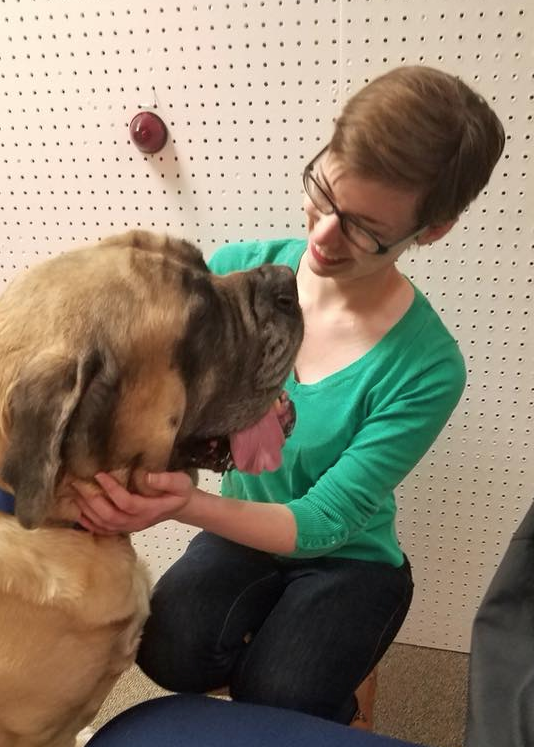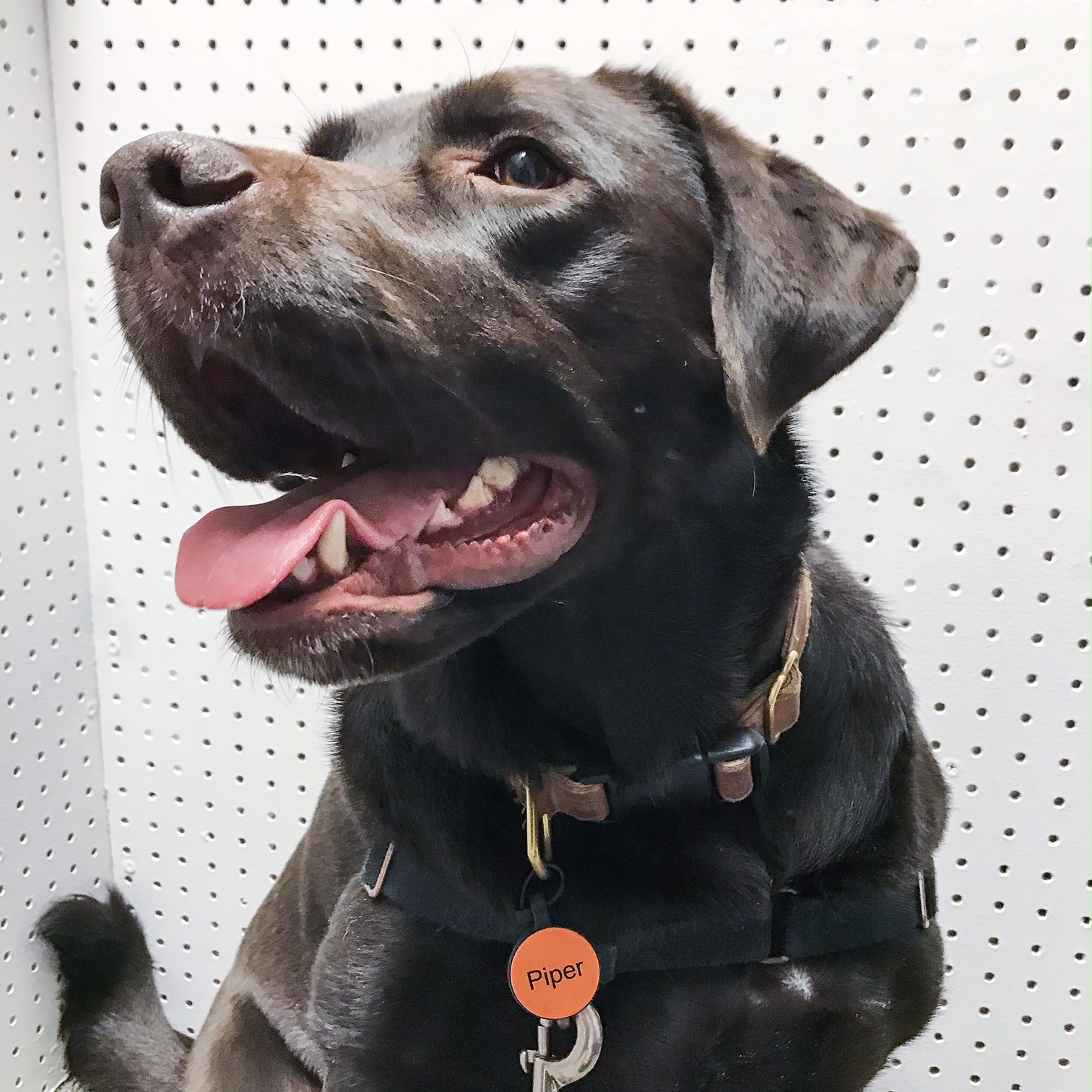Below we have descriptions of some of our recent research projects.

We expect dogs to respond to us regardless of what's going on around us. Service dogs undergo extensive training in all kinds of enivornments to teach them to ignore distractions like noise, but we don't know what kinds and levels of noise are particularly difficult for dogs - just which ones are difficult for us. However, there are reasons to suspect that dogs' experiences of noisy environments differ from ours. First, dogs can hear a wider range of sound frequencies than we can, and detect them at softer thresholds, so they may be sensitive to noises that we don't notice. Second, our researchers' previous work with infants, children, and adults suggests that the ability to recognize speech in noise depends on lower-level attentional skills and linguistic knowledge - our ability to listen in noise develops over time, and different kinds of noise are more distracting or disruptive at different points in development. As adults, our own perceptions of difficult listening environments don't even match our children's.
After years of research on how children and adults process speech in noise, we're repeating some of the same studies in dogs. By learning more about how dogs compare to adults and children on these tasks, we hope to inform training programs for service dogs, preparing them for the most challenging and distracting of environments in which they must work. Additionally, we hope to learn more about similarities and differences in speech processing between young children and dogs, helping us untangle the influence of the auditory processing system, which dogs and humans share, and the unique role of the developing linguistic system in infants and children. We are also interested in how much dogs are distracted by noise even when doing things other than listening; for example, would a search-and-rescue dog be less accurate at finding an important scent in a noisy environment? Answering this question could be very important to people who depend on these dogs on a regular basis.
Canine participants in this study listen to their own name and other dogs' names while seated in a three-sided booth with their owner, and are tested on whether they are able to recognize their own name (preferring to listen to it over the other names) in background noise of different types and levels. Here are a couple examples [1] [2] of what dogs participating in this study may hear.

Imagine you are showing an infant a tennis ball, and you say This is a ball! Even if they've never heard the word ball before, infants typically expect that ball should be extended to other spherical objects - in other words, that the word ball applies to items of a particular shape, not yellow things, small things, or fuzzy things, all equally possible meanings after seeing the tennis ball. Infants' tendency to generalize a newly-learned word across objects based on their shape is called a shape bias. Having a shape bias is useful for infants, because we often apply words to new objects based on similarities in shape. Yet infants' shape bias is likely to be a result of simple attentional biases, rather than an insight about how adults usually use words.
Dogs are capable of learning an impressively large repertoire of words, with some dogs being documented as knowing several hundred item names and category names. One study suggests that instead of having a shape bias, dogs have a size bias for word learning, choosing to extend a newly-learned word to objects that were a similar size over alternatives that had a similar shape. However, this study tested only one dog. We hope to explore this question further with a greater number of dogs, and are interested in questions such as whether dogs have different biases than infants, whether dogs differ from each other in their selections, and whether vocabulary or age help dogs extend new words based on shape, as their owners usually intend. Learning more about how dogs approach word learning helps us better understand how they see the world, and allows us to tailor training practices to work with their natural biases.

Babies tune into the sounds of their native language early on. By around the age of 10-12 months, they notice differences in speech sounds that are used in their own language, but are much less sensitive to differences in sounds that are distinct in other languages, but not the one they regularly hear. How sensitive are dogs to the differences between familiar and unfamiliar languages? How well can they discriminate acoustically similar, but meaningfully different sounds? Do they expect words that sound similar to mean the same thing?
We're looking into these questions and more! For some studies, we are looking for dogs who only hear English. For others, we're looking for dogs to participate who primarily hear a language other than English - check here for more information about signing up with your dog!

Just listening to someone speak provides a lot of socially important information about them. Characteristics like average pitch, speech rate, timbre, and pronunciation of vowels give us clues about the speaker's gender and age, where they are from, and how they are feeling. Children are sensitive to some of these cues early in development, for example expecting that a high-pitched voice goes with a prototypically female face and a low-pitched voice goes with a prototypically male face.
Dogs' evolutionary success has a lot to do with their ability to engage with us socially. Dogs are sensitive to the characteristics of particular voices, recognizing familiar voices and pairing them correctly with familiar faces, but do they need to make these associations one-by-one, or do they recognize commonalities that help them pair voices and speakers? Our researchers are interested in whether dogs pick up on some of the same social cues infants do from voices to help them determine who is speaking and how to respond.